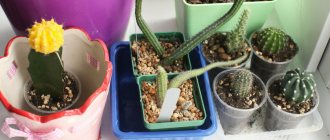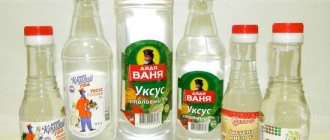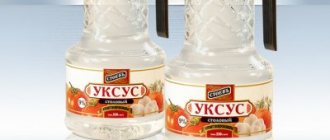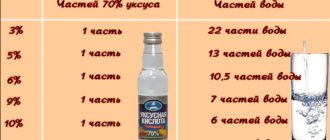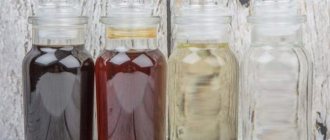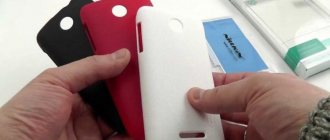When you have fish in your home, you should find out in advance how to clean the aquarium. This seemingly simple activity has its own characteristics and rules that help to restore order in the fish house and not harm its inhabitants. Cleaning is needed not only for beauty, it ensures biological balance, the violation of which leads to irreversible consequences. It is advisable to understand why the water becomes cloudy, what signs indicate the need to clean it, and what daily and general cleaning of the aquarium consists of.
Why does an aquarium get dirty?
Watching the fish calms you down, improves your mood and allows you to promptly notice changes that have occurred in them, indicating that it is time to wash the aquarium. Gradually, the water becomes cloudy, small debris appears in it, and plaque accumulates on the walls, bottom, and soil. These troubles are associated with the life activity of the inhabitants, the presence of algae, and water quality.
The main causes of pollution are the following:
- Overfeeding . If the fish do not eat the food, its remains sink to the bottom and rot.
- Mistakes when decorating . Unprepared soil causes turbidity to appear in the water. Before use, rinse it thoroughly, rinse the shells or figurines used for decoration, and remove fine dust from them.
- Reproduction of microorganisms . Aquarium water necessarily contains bacteria and fungi, which provide benefits by processing ammonia, nitrates and other dangerous substances. But an increase in their number causes a disturbance in the biological balance and the appearance of turbidity. When starting an aquarium, the water needs to be left for several days and only then repopulated.
- Rapid development of algae . This does not mean those plants that sway beautifully and serve as decoration, but lower organisms. They turn the water green and settle on the walls.
- Overcrowding and poor filtration . There are standards regulating the dependence of the number of fish on the volume of water. If there are too many inhabitants, the filter cannot cope, and the amount of waste products increases, causing cloudiness of the liquid.
How to fix it depends on the cause of the problem. You need to analyze the specific situation and decide how to clean the aquarium at home.
Soil preparation after purchase
After purchasing soil for an aquarium, it must also be thoroughly washed. It is recommended to divide the entire package into small fractions (1–2 kilograms each). Next, rinse and bake in the oven for 30 minutes.
If you are using something other than purchased, then you need to let it settle beforehand. That is, step by step it looks like this:
- Rinse the soil.
- Treat it with an antiseptic. To do this, use either a solution of hydrochloric acid (25%) or hydrogen peroxide (1 to 15 with water).
- Leave the soil to settle in an empty aquarium for 1 month. This ensures that there will be no pathogenic bacteria left in it, affecting both the fish themselves and the plants.
It must be taken into account that after such treatment there are virtually no useful components left in the soil (with the exception of the inorganic base, most of which are minerals).
We clean an aquarium professionally at home: materials
In all domestic ponds, without exception, a special coating appears on the walls. This makes the glass untidy. To avoid this, algae must be removed. To solve the question of how to clean an aquarium at home, materials such as:
- Plastic scraper equipped with a sharp metal blade. If you don’t have it, you can replace it with regular stationery knives;
- Kitchen sponge;
- Special magnetic tool.
A scraper or a knife purchased at the office is convenient because it removes dirt on glass very well and quickly. If the structure is made of plexiglass, this tool will not work; it will scratch it.
The magnetic tool is ideal for fairly deep containers and those with limited top access. The tool is suitable for modern plexiglass and eliminates the need to drain water before cleaning. The only downside is the overall difficulty in thoroughly cleaning the corners of the container and the edge of the underside of the glass.
The most economical option is to use a standard washcloth, but it forces you to reach all areas with your hand when washing, and its structure is also not suitable for cleaning plexiglass. The algae deposit removed using the selected tool does not need to be caught and then waste time on the cleaning process. The fish will have time to consume a little, and the rest will be removed when drained.
Which type is better
A siphon is an accessory that is difficult for any aquarium owner to do without. All the inhabitants of the aquarium release their waste products into the environment, the decomposition of which can release rotting products - poisonous gases hydrogen sulfide and ammonia.
Important! These gases are harmful to all living organisms in the aquarium.
If in large natural reservoirs this does not have a significant impact on the health of fish and other animals, then in an aquarium, even a large one, the soil must be regularly cleaned of bottom sediments - fish excrement and silt. In this way, you can clean the filler in the form of sand, pebbles, black types and other varieties.
With pump
The aquarium siphon is very simple. It usually consists of a hose with an extension at the end and a pump with a check valve. As a rule, inexpensive siphons consisting of a bulb equipped with inlet and outlet valves and a corrugated hose do the best job. This type is perfect for a small aquarium due to the replaceable end of the hose.
Battery operated
There are electric siphons that run on batteries. They are equipped with a small electric pump that sucks in water. Such siphons eliminate the need to pump water manually. It is most advisable to use them for owners of large aquariums that require a lot of time to clean manually.
Homemade
You can make a siphon for an aquarium yourself quite easily and cheaply. All you need for this is a flexible hose and a plastic bottle. The thicker the siphon hose, the more water it will draw in per second.
Advice! Select the thickness of the hose based on the volume of your aquarium.
For example, for a 100-liter aquarium, a siphon with a hose 1 cm thick is well suited; for an aquarium of a smaller volume, a correspondingly thinner hose is suitable.
To make your own siphon, cut off the top narrow part of the bottle to create a funnel, and then attach one end of the hose to the neck. To work with such a siphon, you need to place its funnel in water and draw air from the other end of the hose to create draft. Usually, the manufacture of such a siphon does not justify itself - fortunately, full-fledged siphons are available on the market at quite affordable prices.
Cleaning scraper
You can try cleaning vertical surfaces with a scraper. If it is not possible to purchase a special tool for cleaning the bottom of the aquarium, do it yourself. You don't need to use a regular sponge to clean. If the pond is not large in size, a regular razor, pre-attached wire or fishing line of the required length will do.
Specialists use bank cards that are no longer in use to thoroughly clean them. If you don’t want to get your brushes and clothes wet, you can easily attach the card to a wooden base. This tool is efficient and does not scratch at all.
Washing in an emergency in case of contamination and contamination of water
Restarting the aquarium is an emergency measure; it consists of a complete change of water, thorough cleaning of surfaces and complete or partial replacement of plants. This procedure is necessary if the aquarium is infected or the water in it is severely polluted. In the photo below you can see what heavy pollution looks like.
Inaction in such a situation will lead to diseases and death of fish, so as soon as possible it is necessary to temporarily relocate the inhabitants from the contaminated reservoir and carry out general cleaning.
The contaminated container is emptied completely and filled with disinfectants for a day. Bleach and potassium permanganate solution are best suited for these purposes.
All equipment removed from the aquarium is subjected to heat treatment (boiling), and after disinfection, the aquarium itself is thoroughly rinsed and left to dry for at least 24 hours.
The launch of the reservoir is carried out in several stages. After drying, add water, about a third of the maximum volume. Purified soil and artificial elements are placed inside. The container is left in this form for 5–7 days, and then the preserved algae are planted.
After another 3-5 days, add water and put the fish inside.
Glass cleaning
Even if your aquarium is sparkling clean and tidy, green deposits will still appear on the walls. Over time, it will begin to increase and ruin the entire aesthetics of the reservoir. To get rid of them, you need to take a scraper (with a blade or a magnetic scraper) or a washcloth. If the depth of your aquarium is acceptable for working with a regular scraper, then go ahead. But there are times when getting to the aquarium from above is a big problem or its depth is very large. In this case, it is best to use a magnetic scraper. It does not scratch glass, only if some grain of sand gets between its working surface. The main disadvantage of such scrapers is that it is difficult to process the lower edge near the ground and corners.
You can also carry out this procedure with a household washcloth, but if your aquarium is made of plexiglass, it is better to put the washcloth aside. There is no need to catch all the algae that you remove from the walls from the aquarium; fish will eat it or it will partially merge with the water.
How to clean an aquarium from limescale?
Most often, owners are faced with a coating of algae and bacteria or a very slight formation of limescale stains. In this case, it is recommended to simply mechanically remove dirty deposits with a scraper, washcloth or household sponge, having first turned off all electrical appliances serving the aquarium, except the filter. Such manipulations can be carried out in the presence of fish.
If you can’t wash everything off the first time, you can use a scraper with a metal blade or a utility knife. But you should remember that they can leave scratches on the acrylic surface, so you need to act extremely carefully.
Do not use sponges used in the kitchen for aquarium work. They are home to many microorganisms. In addition, they are usually saturated with fats from dishes, and all this does not contribute in any way to the creation of safe microflora in the home pond.
However, it also happens that deposits of calcium salts form in large quantities. The reason for this may be:
- absence or insufficient number of aquarium plants;
- systematic excess of feed;
- use of unsettled water;
- poor filter quality (or severe contamination);
- Irregular cleaning of the aquarium.
In this case, you will have to carry out general work by moving the fish using a net to another container and draining the water.
How to properly clean your home pond from limescale? There are many industrial detergents designed specifically for these purposes. They can be purchased at specialized pet stores.
Or you can resort to the help of folk remedies, which are available to almost any housewife, and try one of the following compositions:
- lemon juice;
- a solution of a glass of water and 20 grams of citric acid;
- a solution of a tablespoon of vinegar (9% concentration) and a glass of water;
- a mixture of ammonia and water (working proportion – 1:10);
- hydrogen peroxide diluted with water (half a glass of water - 30 ml of peroxide).
It is most convenient to apply these compositions to dirt using a spray bottle (flower growers always have these). Next, the products must work for some time, it depends on the scale and density of the plaque. Then remove the deposits using an old toothbrush, a hard sponge or a metal scraper.
The final stage is thorough repeated rinsing of all internal surfaces of the treated container.
If you need to wash the decor, remove all elements and wash with a sponge or brush, without using any chemicals.
Cleaning without siphon
In the natural environment, there are a large number of participants in the ecosystem: leftover food and fish excrement are eaten by snails, shrimp and bacteria. But to maintain cleanliness in the aquarium, their owners will have to work hard to properly maintain the fish.
Aquariums should be washed carefully and without sudden movements. Remember, interfering with the underwater world causes stress to its inhabitants.
Cleaning of the soil begins with plants and decorative elements . Large pebbles, shells, houses and castles should be taken out and washed under running water. Plants and algae are carefully inspected for defects. If they have yellowed or rotting leaves, they are carefully removed. When cleaning the bottom of the aquarium, it is better to immediately replant the plants, if necessary.
If you clean the soil without a siphon, you can simply rinse it under running water . In this case, the fish should be transplanted into a separate container (basin, bucket).
This procedure looks like this:
- The soil is taken from the aquarium.
- Pours into a bucket.
- It is washed at maximum pressure until all the dirt is washed out.
- It is best to wear a rubber glove and periodically stir the soil in the bucket.
Soil disinfection
Disinfection is performed to prevent the spread of infectious diseases among fish. It is also recommended to do this if there have been cases of illness among the inhabitants of the aquarium.
Disinfection is carried out as follows:
- Transfer the fish and plants temporarily to another container.
- Remove the soil, rinse under strong water pressure (until the liquid becomes completely transparent without any inclusions of fractions).
- Place a container with soil and water on the gas stove. Boil for 20 – 30 minutes.
- Drain the water and spread the soil evenly onto a baking tray. Place in the oven for 20 - 30 minutes at a temperature of about 200 degrees Celsius.
Afterwards, let it cool and can be placed in the aquarium. Such treatment kills the entire spectrum of pathogenic and harmful bacteria. But using any “aggressive” drugs or alcohol for disinfection is prohibited. Aquarium soil has a porous structure, that is, it works like a “sponge”.
Changing the water in the aquarium
After cleaning the inside of the aquarium, you can start changing the water in it. The volume of water changed depends on the degree of contamination. Typically, about 25% of the total water is replaced. The required amount of water for replacement should be drained to clean the soil. The water is drained using a siphon, following the instructions of the device. It is forbidden to use ordinary running water for replacement; it must be settled in advance. It is recommended to pour new water onto a grotto or saucer that has been placed in advance on the substrate, so that the water pressure does not directly hit the ground and damage it.
When not to siphon
- Rarely do they clean aquariums that are completely planted and contain small amounts of small fish and shrimp. The absence of acidification is due to the fact that plant roots penetrate all layers of soil and release oxygen. The released oxygen eliminates the formation of anaerobic zones. The exception is small and weak roots in combination with fine soil laid out in a thick layer. To control the situation, you should periodically check the soil, loosening it with a thin stick.
- It is forbidden to siphon a newly launched aquarium; it will be possible to siphon it no earlier than after 14 days. It is necessary to first grow a colony of nitrifying bacteria in the reservoir; only water changes are allowed.
- It is prohibited to use a siphon to clean herbal aquariums that are densely planted. The siphon will upset the balance, depriving the plant roots of the necessary nutrition. Cleaning helps to raise sludge, which releases harmful substances into the water, including ammonium. Another feature of the herbalist is the nutrient substrates, which are washed away during cleaning, losing their benefits.
Cleaning the filter
It is not recommended to wash the internal filter together with other elements of the aquarium, since a sudden change in the biological balance can cause significant harm to the inhabitants of the reservoir. Once a month, the filter can be disassembled and washed using a toothbrush.
Cleaning manipulations should be carried out in such a way as not to harm the beneficial bacteria that have settled on it. They should not be washed thoroughly. The filter elements are lightly washed in water from the aquarium. If the filter has a ceramic filler, it should not be washed more than once a month.
What do you need to wash less often?
Sometimes fish lovers try to do everything possible to interfere less often with the usual rhythm of aquatic inhabitants. To clean the aquarium less often, it is recommended to plant it densely with vegetation , choose large containers and breed small fish.
Also, to reduce the formation of harmful organisms in the soil, you need to learn how to feed your fish correctly. The remaining food settles to the bottom and begins to rot, releasing hydrogen sulfide. It oxidizes the aquatic environment and negatively affects the health of fish.
To clean the bottom of the aquarium less often, you can populate it with fish that eat the remaining food from the bottom . Such inhabitants include: loaches, geophagus, catfish and ancistrus.
Also, in order to clean the bottom of the aquarium less often, it is recommended to select soil of the same fractions. It practically does not cake and does not sour.
Be sure to place a filter in the aquarium . It will filter the water and collect remaining dirt. The filter also needs to be washed periodically (at least once a month). To do this, a foam insert is taken out of it, which is washed under water pressure.
In conclusion, it is worth noting that with proper care and regular cleaning of the aquarium, your fish will be healthy and you will be able to enjoy its beautiful appearance.
- Related Posts
- An important question: which soil is better to choose for an aquarium?
- How to choose and prepare soil for an aquarium with live plants (herbalism) correctly?
- All about black aquarium soil
Vegetation treatment
If there is living vegetation in an artificial reservoir, then it also requires care and purification. Plants can be cleaned at home, following certain rules:
- Plants do not like transplants.
- Vegetation is not processed during every harvesting operation.
- Spoiled and damaged leaves are cut off.
- Overgrown plants must be removed so that they do not become an obstacle to the free movement of fish.
- Pruning should be done as the bushes grow.
- Overgrown bushes should be thinned out so that they do not interfere with the penetration of light into the container.
- If it is necessary to remove a plant by its roots, the manipulation is carried out as carefully as possible to prevent the rise of turbidity from the substrate.
I added a specialized substrate to the soil. Can I siphon it like a regular one?
If you use a specialized substrate, the siphon can significantly thin it out. At first, at least until significant siltation occurs, it is better to avoid using a siphon.
If they make a substrate, then they plant a lot of plants. And if you plant a lot of plants, then, in general, there is no need to siphon. And if it so happens that you need to siphon, then only the top layer of soil will siphon (and with a substrate it should be at least 3-4 cm).
Well, it should be clarified that the substrate cannot be used with heavily digging animals, such as cichlids or crustaceans - if they get to the bottom of it, there will be a rush in the aquarium.
Cleaning the bottom and soil
A lot of waste accumulates at the bottom of the aquarium. To get rid of them, you can use the same hose with a funnel to drain the water, or you can clean it with a special blower with a rubber or glass tip, lowering it to the bottom.
It should be remembered that this is a very powerful device for removing dirt from an aquarium, therefore, you need to be careful with it so that a fish does not inadvertently get sucked into it.
This way the aquarium soil is cleaned of food residues and accumulated debris. Cleaning must be done thoroughly; there is no need to lower and hold the hose in one place; we collect debris around the entire perimeter of the aquarium. This procedure may require replanting the plants, since the entire soil needs to be cleaned, and not a specific part of it.
Many people are interested in: “How to clean the soil in an aquarium” so that cloudiness does not appear in the water?” The answer is simple - no way. In any case, it will settle after we pour clean water into the aquarium and let it settle for a while.
Siphonka
Cleaning the aquarium using a siphon is an ideal option. But it is not suitable if you have a lot of small fish and plants. If the fish are large and there is little vegetation, then you can start cleaning. Cleaning the soil using a siphon looks like this:
- We prepare the siphon.
- We stick the funnel cylinder into the ground and stir it, without staying in one place for more than 5 seconds.
- We direct the end of the hose into the substituted container. Water and all debris from the bottom will drain through the hose.
- When clean water flows through the hose, the cleaning process can be completed.
- Now you will need to add the settled water to the aquarium instead of the drained water.
For several hours after cleaning the aquarium with a siphon, the water will be cloudy. There is no need to worry about this. It will settle and become transparent.
How to clean with hydrogen peroxide?
In special situations, it is necessary to use hydrogen peroxide when cleaning the tank. This composition may be required in such situations as:
- Fish diseases.
- Rapid spread of algae.
- Accidental overturning of a can of food.
- One of the fish died, which went unnoticed.
- The filters did not work for a long time.
The use of the composition will saturate the water with a large amount of oxygen. At the same time, oxidation of organic matter will be observed, a large amount of which is quite harmful to the inhabitants of the reservoir.
To achieve a positive effect when using peroxide, you will need to first dilute the composition in a small container, in a ratio of approximately 1:15. It is strictly forbidden to pour pure pharmaceutical composition into the tank; there is a great danger of burning the living inhabitants. The solution is poured from a syringe in a thin stream into the filter, which will gradually release it into the water and produce its beneficial effect.
After about half an hour or an hour, it will be possible to perform a water change to finally remove all elements of dead organic matter that can cause rot.
Making a siphon with your own hands
The price of a regular mechanical siphon is in the range of 500-700 rubles. This is quite affordable for aquarists, but many prefer to make siphons themselves, not wanting to waste time searching or waiting for the device to be delivered from online stores.
For a homemade siphon you will need:
An empty plastic bottle (0.5 l) with a lid, preferably transparent.
Shoe knife.
A piece of hard plastic hose 50-60 cm long.
1.5-2 m of flexible hose with a diameter of 10 mm.
To make a siphon, you must perform the following steps:
- The plastic bottle is cut so that a funnel of the required diameter is formed. For more active water suction, the edges can be made jagged.
- A hole is made in the lid for connection to a rigid tube. An adapter is installed on the free end to connect a flexible hose.
- All connections are sealed with electrical tape (you can use silicone sealant).
At this point, the production of a simple siphon can be considered complete.
Cleaning a marine aquarium
If you want to thoroughly clean an ordinary marine tank, which is usually filled with various decorative elements, you will need to follow these rules:
- Decorations can be cleaned inside the aquarium with a stiff brush or outside with a sponge;
- Modern detergents and household cleaners are not used;
- Be sure to remove all algae damaged by crawling snails or fish. You also need to get rid of eaten leaves. The plant should not complicate the movement of aquatic inhabitants;
- If you do not plan to change the water during harvesting, you need to weed out the bushes very carefully, without raising the turbidity.
To save yourself from regular and tedious weeding, you should get special algae-eating fish. They will keep the water clean for a long time. If you use an additional magnet to clean the aquarium, you can get the best option for cleanliness.
If plants grow very quickly, if they acquire a brown tint, this indicates an unfavorable situation in the reservoir. It will be necessary to take certain measures to effectively control lower plant species.
How to change the soil without restarting the aquarium?
The easiest way to remove old soil is to use the same siphon. But you will need a larger size than the standard hose and siphon pipe so that you can create a powerful stream of water that will carry away not only dirt, but also heavy particles.
Afterwards you can carefully add new soil and add fresh water instead of what you drained. The disadvantage of this method is that sometimes you need to drain too much water during the siphoning process to remove all the soil.
In this case, you can do this in several passes. Or choose soil using a plastic container, but there will be much more dirt. Or even easier, use a net made of thick fabric.
Cleaning the walls
Contamination of glass with bacteria and algae is a natural process, so you should not think that the problem is due to improper fish keeping. Glass that becomes cloudy over time causes discomfort not only to the inhabitants of the aquarium, but also prevents owners from monitoring the lives of their beloved pets.
To remove plaque from the walls, you need to purchase a special scraper. A simpler option involves using a regular sponge, which can be found in every person’s home. When using a magnetic scraper, please note that it does not cope well with dirt in the corners of the aquarium. You can also wash the outside of the glass container. On sale you can find special products adapted for this purpose.
Tips for care and use
In order for an aquarium with underwater inhabitants to bring exclusively positive emotions to the owner, simple rules should be followed:
- Use only soft, purified water. It will contain few salts, and, as a result, less hardness. This will reduce the amount of limescale deposits. However, water completely devoid of minerals should not be used: fish need the substances in small quantities.
- Buy special supplements at the pet store. They will help reduce calcium content and reduce water hardness. You can periodically dilute distilled water.
- Maintain the filter regularly - it is its condition that guarantees the cleanliness of the aquarium and the health of the fish.
- If the fish shows signs of illness (lethargy, change in behavior, etc.), urgently transfer it to a separate container - this will help avoid an epidemic.
In order for the water to remain clean and clear, the aquarium must be in biological balance. For example, beneficial bacteria break down excrement and food debris. The waste becomes suitable for feeding plants, which, in turn, are able to purify water and release the oxygen necessary for living creatures.
A great way to make cleaning easier and diversify the aquarium population is to have natural “helpers”.
- Shellfish actively fight algae by eating them. In addition, snails clean plaque from the walls.
- Shrimp eat dead parts of plants and absorb algae.
- Some fish feast on algae. They can also be placed in a pond.
An aquarium is a rather complex ecosystem with its own orders. Your task is to maintain the necessary balance. Be careful when settling the aquarium, handle it carefully, and then your home pond will bring you joy.



